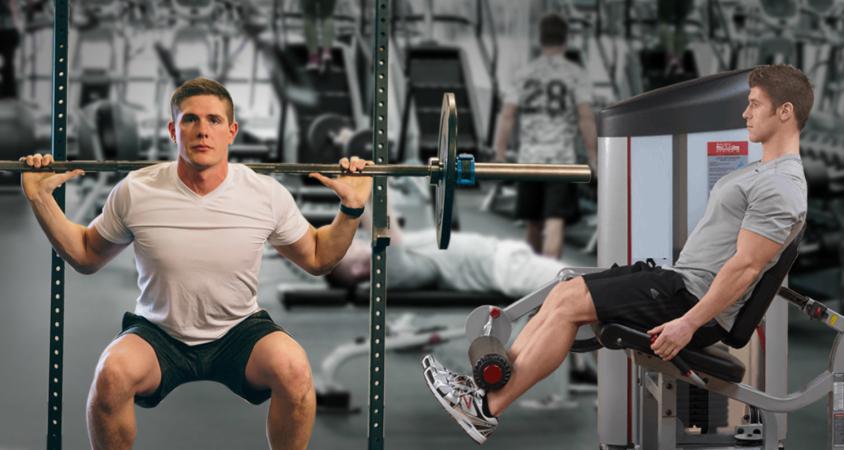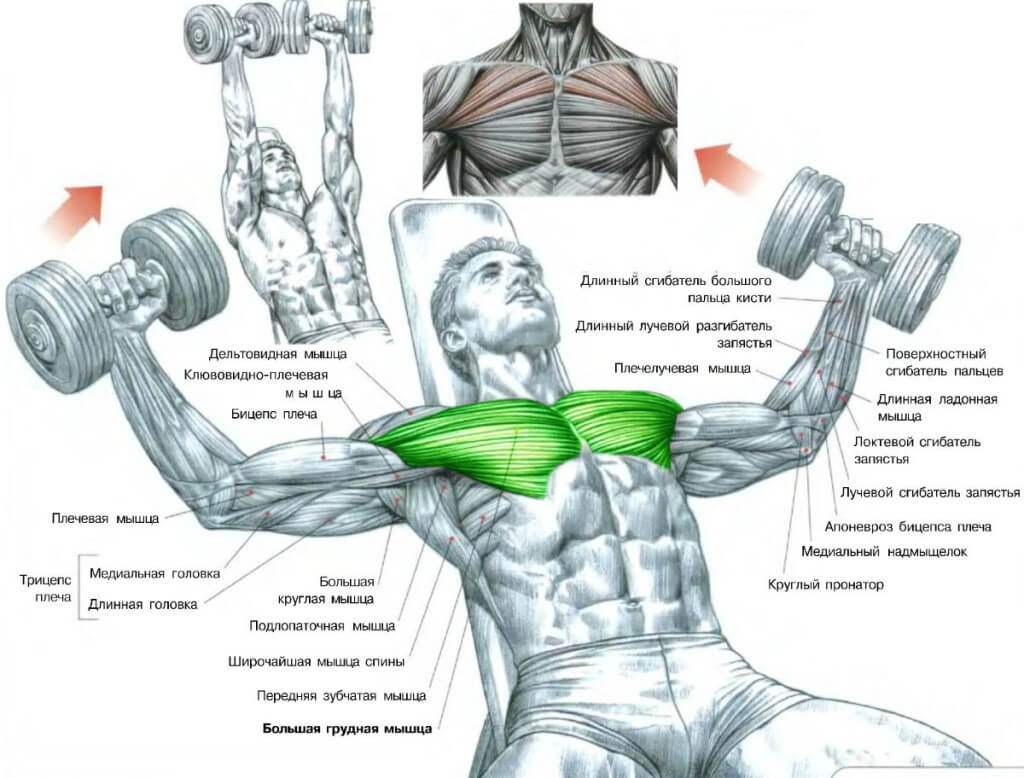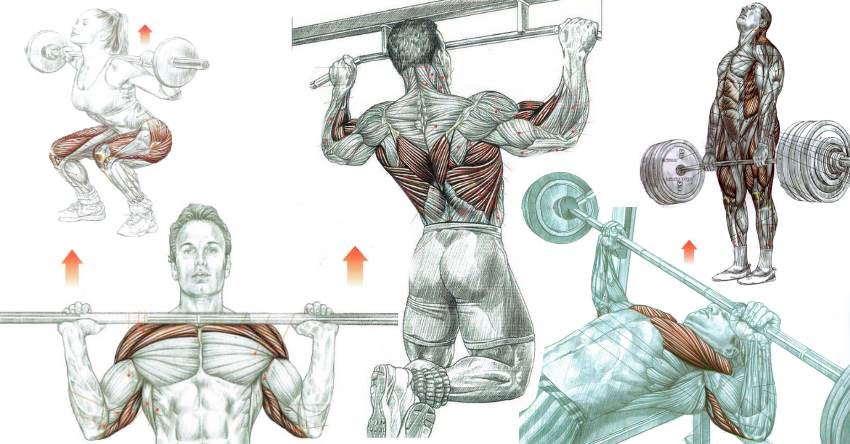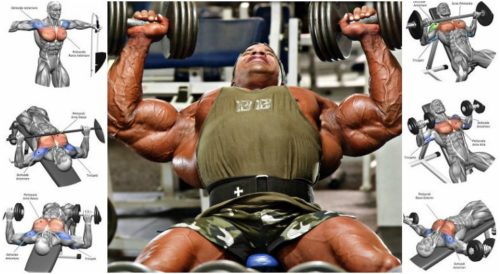There comes a point in every trainers life when they stop, and realise that no matter how much time, effort or exercise change is made, your strength and size gains start to slow and even stop. This can be frustrating as your goals and targets can become harder to achieve and feel unrealistic.
However this is not the case, all you need are supersets! If you’ve never heard of or understood what supersets are and the benefits, then look no further, because here at gymguider we have outlined the structures and reasons why you should start involving them into your workouts!
Their are two different ways supersets are different from your average workout:
- With a normal set, you may rest up to 90 seconds, but with a superset you perform with little or no rest between sets.
- Second, supersets combine two different exercises. You will perform two exercises in a row with next to no rest in between.
The advantages are great for muscle mass and definition. But they are not effective for building strength, this is because you reduce weight so the sets can be performed. You will find you are forced to reduce weight because of fatigue due to lack of recuperation between sets.
- Supersets save time because of the reduction of rest intervals between two exercises.
- By shortening the rest period between sets, you will increase intensity by performing more work in less time.
- You can increase the intensity of your workout by overloading a muscle. This may be performed without heavy weights because the muscle is exposed by 2 exercises without rest.
It is essential to correctly pair movements in order to benefit from supersets and perform them correctly.

1. Pre-Fatigue:
Pre- fatigue is when you pair two exercises for the same muscle group.
- The first movement is an isolation movement: An exercise where the target muscle is doing the majority of the work alone.
- Second, is a compound movement: An example for the chest would be to perform a set of dumbbell flyes, then immediately a set of bench press.
In a compound movement, the target muscle isn’t working alone and might not be fully stimulated at the end of the set. Pre-fatigue the chest with an isolation movement and you’ll feel the pecs much more in the bench press. But you won’t be able to use as much weight in the compound exercise, which is also the best mass builder of the two movements.
An example of pre-exhaust or double-pre-exhaust routine(s) would look like this:
Chest: Flyes, Inclined Press, Bench Press.
Biceps: Concentration Curls, Dumbbell Curls, Barbell Curls.
Shoulders: Side Lateral Raises, Front Lateral Raises, Shoulder Presses.
Triceps: Kickbacks, Pushdowns, Lying Tricep Extensions.
Legs: Leg Extensions, Hack Squats, Leg Presses or Squats
Back: Hammer Rows, Machine Pulldowns, Bent-Over Rows.

2. Post-Fatigue:
With post-fatigue you are starting with the compound movement and then perform the isolation movement. This allows you to fully stimulate the target muscle, but doesn’t affect the amount of weight you use on the bigger exercise.
You perform 2 exercises for a single muscle group back to back; first a compound lift, and secondly an isolation lift with limited rest in between sets. The aim is to wear down a large muscle group with heavy weights, and finish while it is fatigued with an isolation lift.
A post-exhaustion superset is a serious workout for intermediate and advanced trainers, it should not be attempted by someone who has been training less than a year. The reason is you are causing muscle damage using compound movements with supersets, using an isolated movement working in the 5-7 rep range to target the larger fast twitch fibres.
This post exhaustion superset training should be used by people who have already increased their lean body mass from weight training by at least 20 pounds. Also someone who is capable of correct form and knows how to eat correctly.
Below is what a good post-exhaustion superset workout would look like. You should use compound movements to first reach the point of exhaustion before moving onto an isolated movement to completely exhaust the targeted muscle.
The recommended tempo 2-1-2 means that the weight is lifted or pulled concentrically for 2 seconds followed by contracting for 1 second at full contraction and then lowering the weight eccentrically for 2 seconds.
Chest post-exhaustion; Bench press followed by D/B flyes.
Back post-exhaustion; Barbell rows followed by (straight arm) lat-pulldowns.
Shoulder post-exhaustion; Military press followed by side D/B lateral raises.
Quads post-exhaustion; Squats followed with leg extensions.
Hamstring post-exhaustion; Romanian deadlifts followed with leg curls.
Biceps post-exhaustion; Palm up chin ups followed with cable curl.
Triceps post-exhaustion; Close-grip bench-press followed with triceps pushdowns.
Calves post-exhaustion; Standing calf raise followed with seated calf raise.
3. Compound:
This consists of pairing two compound movements for the same muscle group, e.g. bench press and dips:
With bench press and dips, if your triceps are stronger than your pecs, you’ll rely mainly on triceps during both movements, this means the chest could feel under-stimulated.
The advantage to a compound superset is that you can work more than one part of the muscle in the same set.

4. Isolation:
This is when you are pairing two isolation exercises for the same muscle group. The purpose is to focus on several parts of a muscle at the same time.
You have to select exercises that work different parts of the muscle. If you choose two movements targeting the same area, you will not achieve full benefits from this technique.
5. Antagonist:
In this method you pair two exercises for opposing (antagonist) muscles.There’s no rest between the first and second movements.
Antagonist supersets are used as a viable method to develop strength. The few reasons for this are:
- Firstly, by contracting antagonistic muscle groups alternately, you can enhance motor unit recruitment.
- Second, strength development requires quality sets. By alternating sets, you can achieve more work in a given time. For example, instead of doing 8 sets of 3 in the bench press with four minutes rest, followed by the same on chin-ups, you alternate the two with two minutes of rest and almost half your training time, allowing you to spend time working on other exercises and movements.
- Lastly, alternate sets allow for faster recovery in a muscle group during a workout, leading to less of a drop-off in total volume load. When you maximally activate a muscle group, the antagonistic muscle group is inhibited to allow for greater force in the agonist. Through inhibition, you allow that muscle to restore its strength much quicker.
With this approach, you can pair these muscles together:
- Chest and back.
- Biceps and triceps.
- Quadriceps and hamstrings.
- Lateral/front deltoid and rear deltoid.
- Abs and lower back.



Post your comment